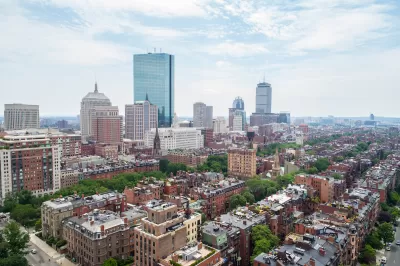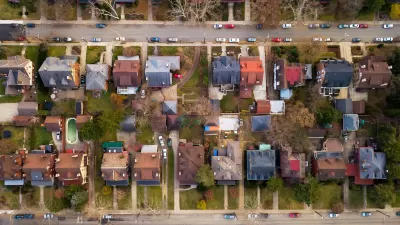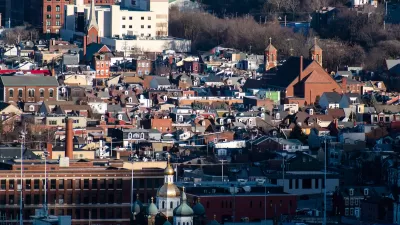The proposal would reduce barriers to the development of denser housing.

A proposal from the Boston Planning and Development Agency would change the city’s zoning rules to a form-based code designed to make it easier to build denser housing and mixed-use developments, particularly near transit.
As Catherine Carlock explains in the Boston Globe, “It’s a process the city’s calling ‘squares and streets,’ and they hope it serves as an example of how to both modernize the zoning code and to address community needs, all through a lens of long-term sustainability.”
“If the draft squares and streets zoning plan is approved by the city’s Zoning Commission next month, communities and neighborhoods will be able to select from a ‘menu’ of five proposed building types, from ‘transition residential’ and ‘main street living’ — housing and mixed-use buildings capped at 50 feet — to ‘active’ zones allowing buildings as high as 85 feet with street-level retail with housing, office or other commercial space above.”
While specific sites have not been selected for denser development, the city points out there are areas near transit stops that could benefit from more housing.
FULL STORY: Wu pushes plan to streamline Boston’s complex zoning

Trump Administration Could Effectively End Housing Voucher Program
Federal officials are eyeing major cuts to the Section 8 program that helps millions of low-income households pay rent.

Planetizen Federal Action Tracker
A weekly monitor of how Trump’s orders and actions are impacting planners and planning in America.

The 120 Year Old Tiny Home Villages That Sheltered San Francisco’s Earthquake Refugees
More than a century ago, San Francisco mobilized to house thousands of residents displaced by the 1906 earthquake. Could their strategy offer a model for the present?

HSR Reaches Key Settlement in Northern California City
The state’s high-speed rail authority reached an agreement with Millbrae, a key city on the train’s proposed route to San Francisco.

Washington State Legislature Passes Parking Reform Bill
A bill that would limit parking requirements for new developments is headed to the governor’s desk.

Missouri Law Would Ban Protections for Housing Voucher Users
A state law seeks to overturn source-of-income discrimination bans passed by several Missouri cities.
Urban Design for Planners 1: Software Tools
This six-course series explores essential urban design concepts using open source software and equips planners with the tools they need to participate fully in the urban design process.
Planning for Universal Design
Learn the tools for implementing Universal Design in planning regulations.
Ada County Highway District
Clanton & Associates, Inc.
Jessamine County Fiscal Court
Institute for Housing and Urban Development Studies (IHS)
City of Grandview
Harvard GSD Executive Education
Toledo-Lucas County Plan Commissions
Salt Lake City
NYU Wagner Graduate School of Public Service





























